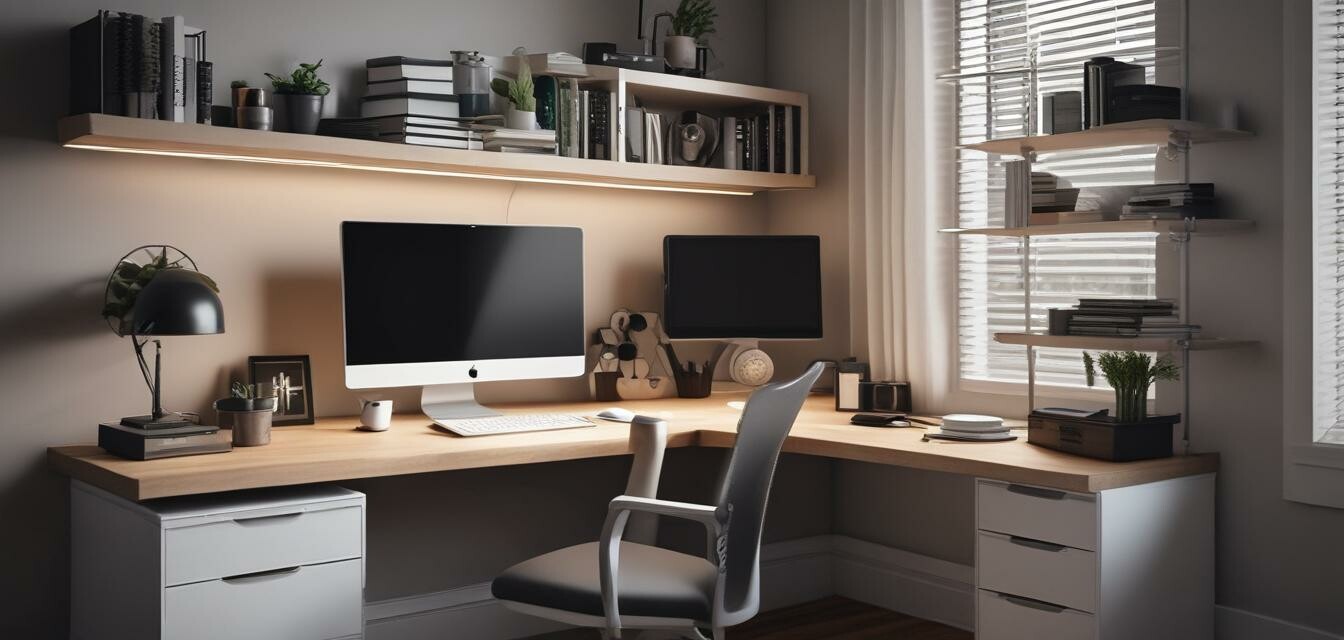
Transforming Small Spaces into Efficient Home Offices
Key Takeaways
- Maximizing vertical space is essential in small offices.
- Choosing multifunctional furniture can save space without sacrificing comfort.
- Decluttering regularly helps maintain an organized workspace.
- Utilizing natural light can enhance productivity and create an inviting atmosphere.
In the current work-from-home landscape, many are finding themselves needing to create efficient home office spaces within small areas. It’s challenging yet very possible to transform these compact locations into productive environments. This article provides tips and strategies on layout arrangement, furniture selection, and decluttering techniques that can help you maximize your small space.
Understanding Your Space
Before diving into specifics, it’s vital to evaluate your existing space. Consider the following aspects:
- Dimensions of the area
- Location of electrical outlets
- Natural light sources
- Potential for vertical storage
Optimal Layout Strategies
Creating an efficient layout can make a significant difference in a small office. Here are some layout strategies to consider:
| Layout Type | Description | Best For |
|---|---|---|
| Corner Desk | Utilizes corner space efficiently | Maximizing work surface |
| Wall-Mounted Desks | Free up floor space while providing work surface | Very small or tight spaces |
| Floating Shelves | Store items without occupying floor space | Quick access to necessary supplies |
Choosing the Right Furniture
Furniture selection plays a critical role in creating an efficient workspace. Here are some guidelines:
Tips for Selecting Furniture
- Look for multifunctional pieces: For example, desks that include storage or chairs that can also be used as seating for guests.
- Choose lightweight and movable furniture: This allows you to easily reconfigure your space as needed.
- Consider ergonomic options: Prioritizing comfort is essential even in a small space.
Decluttering Techniques
A clutter-free environment enhances productivity. Here are some effective decluttering strategies:
- Implement a “one in, one out” rule for new items.
- Establish categories for your supplies to streamline organization.
- Designate a “clutter box” for temporary storage of miscellaneous items.
Utilizing Vertical Space
Don't underestimate the potential of your walls. Here’s how to make the most of your vertical space:
- Install shelves: Use wall-mounted shelves to store books and office tools.
- Wall organizers: Magnetic or pegboard organizers can keep items within reach.
- Hang lighting: Utilize hanging lights or lamps to free up desk space.
Incorporating Natural Light
Natural light is not only beneficial for your mood but also enhances your workspace. Here are some ideas:
- Position your desk near windows to capture natural light.
- Use light-colored walls and decor to reflect light.
- Incorporate plants to enhance the natural light ambience.
Final Thoughts
Transforming small spaces into efficient home offices is an attainable goal with the right strategies and design choices. By maximizing your layout, selecting multifunctional furniture, and keeping things organized through decluttering techniques, you can create a productive workspace that fits your needs. For more inspiration on home office setups, check out our Setup Inspiration section.
Pros
- Maximizes limited space efficiently.
- Promotes productivity through organization.
- Encourages a comfortable working environment.
Cons
- May require upfront investment in furniture.
- Can be challenging to find the perfect layout.
- Regular maintenance of organization is needed.